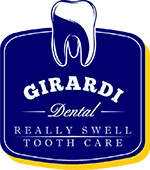What to Expect During Your First Emergency Dentist Appointment?
That sudden jolt of pain. The panic when you see blood. The worry that something’s seriously wrong. Dental emergencies come out of nowhere and often leave people stressed, especially if it’s their first time dealing with one. Emergency Dentistry in St. Catharines, ON, ensures fast, professional care when you need it most, so you’re not stuck guessing or suffering.
1. Identifying a Dental Emergency
Not every issue requires urgent dental care, but some definitely do.
Dental emergencies aren’t always dramatic, but they usually come with intense symptoms that demand immediate attention. Recognizing those signs early helps you take action before the problem worsens.
Common symptoms include:
- Severe, persistent toothache: That sharp, deep ache that won’t quit? That’s your body’s signal that something’s wrong.
- Knocked-out or loose teeth: A tooth that’s been completely knocked out or is moving more than usual needs fast treatment to avoid permanent loss.
- Uncontrolled bleeding: If you’re bleeding from the gums, tongue, or cheek and it doesn’t stop, that’s a red flag.
- Visible swelling in the jaw or face: Swelling may mean an infection is brewing, especially if it’s warm or tender to the touch.
- Cracked or broken teeth: These might not hurt right away, but they expose sensitive nerves and risk future infection.
If something feels off and it’s affecting your ability to eat, sleep, or focus, don’t wait. That’s when you start looking for an emergency dentist near you.
2. Preparing for the Appointment
In an emergency, things can feel rushed. But taking a few calm, practical steps can make a big difference when you walk through that door.
Here’s what to do:
- Call the dental office immediately: Ask if they accept emergency cases. Some offices have after-hours support or on-call staff just for this.
- Describe your symptoms clearly: Be honest about what you’re feeling—pain level, duration, anything that triggered it.
- Preserve any lost teeth or broken pieces: Store them in milk or your own saliva if possible. It sounds odd, but it keeps the tissue moist and viable.
- Write down important info:
- List of medications you’re currently taking
- Insurance details or payment information
- Any allergies, especially to anesthesia
Having this ready means less delay and more focus on helping you feel better.
3. What Happens During the Examination?
Let’s take the mystery out of it. When you reach your emergency dental visit, the process is fairly straightforward—but very thorough.
Your dentist will begin by asking key questions:
- How long have you been in pain?
- Did the issue start after eating, an accident, or out of nowhere?
- What makes it worse or better?
Next comes a visual inspection of your teeth, gums, tongue, jaw, and overall oral health. If needed, your dentist may use dental tools to gently probe certain areas.
To see beyond the surface, X-rays might be taken. These reveal infections, cracks, abscesses, or anything hiding under your gums or within your teeth.
This part of the appointment is focused on diagnosis. Once your dentist understands what’s wrong, they’ll decide how to fix it, starting immediately if needed.
4. Immediate Treatment and Pain Relief Options
Emergency dental appointments are all about one thing: relief.
No one wants to leave an emergency visit still in pain. Dentists know this, and they come prepared with tools and treatments to help you fast.
Some of the common emergency treatments include:
- Temporary fillings or crowns: If your tooth structure is compromised, this helps protect it until a permanent solution is available.
- Pain relief and numbing agents: Whether it’s oral meds, local anesthesia, or anti-inflammatory injections, dentists offer fast comfort.
- Draining an abscess: Infections like abscesses need to be drained and cleaned quickly to prevent spreading and reduce pain.
- Tooth reinsertion or splinting: If a tooth has been knocked out or loosened, dentists can attempt reinsertion or secure it with a splint.
- Antibiotics: These may be prescribed if you have signs of infection, especially swelling or fever.
Every emergency is different, but the goal is the same: Get you stable, out of pain, and on the path to full recovery.
5. Follow-Up Care and Preventing Future Emergencies
Even if the worst is over, your dental journey isn’t finished yet. Follow-up care is often required to fully resolve the problem.
You might need:
- A root canal is performed after an infection is managed
- A crown after a temporary filling
- A tooth extraction if the damage is too serious
After your initial visit, your dentist will provide specific aftercare instructions—things like what to eat, how to clean the area, and when to take medications.
But beyond that, it’s important to look forward and prevent future emergencies. Here’s how:
- Brush and floss twice daily: Yes, it really makes a difference.
- Use a mouthguard: If you play contact sports or are used to grinding your teeth at night.
- Avoid chewing hard items: Such as popcorn kernels, ice, and hard candy.
- Visit your dentist regularly: Catching small issues early prevents big ones later.
You don’t have to go through another emergency. A little prevention can save much pain and stress.
Final Thoughts
Dental emergencies are never convenient, but they’re absolutely manageable with the right care. When something feels wrong, acting fast helps you heal faster. If you’re searching for a dependable dentist in St Catharines, turn to Girardi Dental for calm, compassionate emergency care that puts your comfort first.

